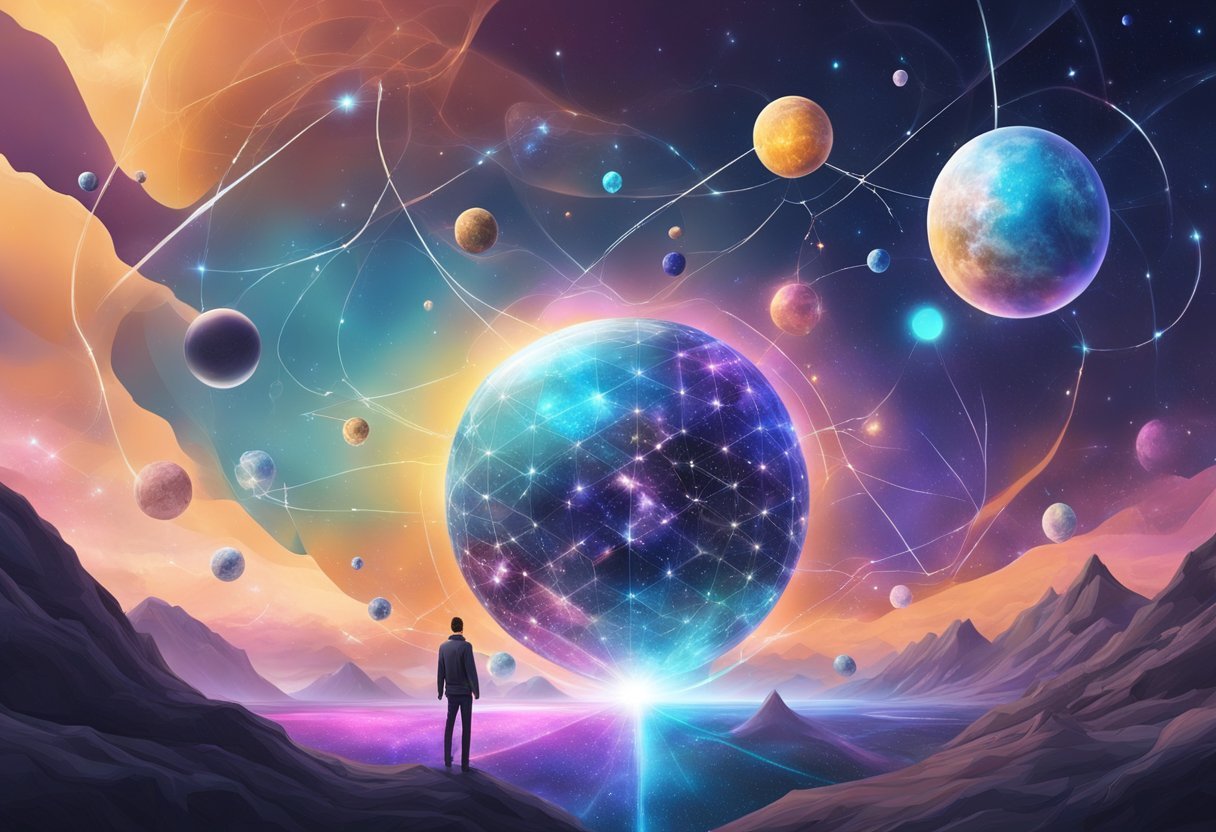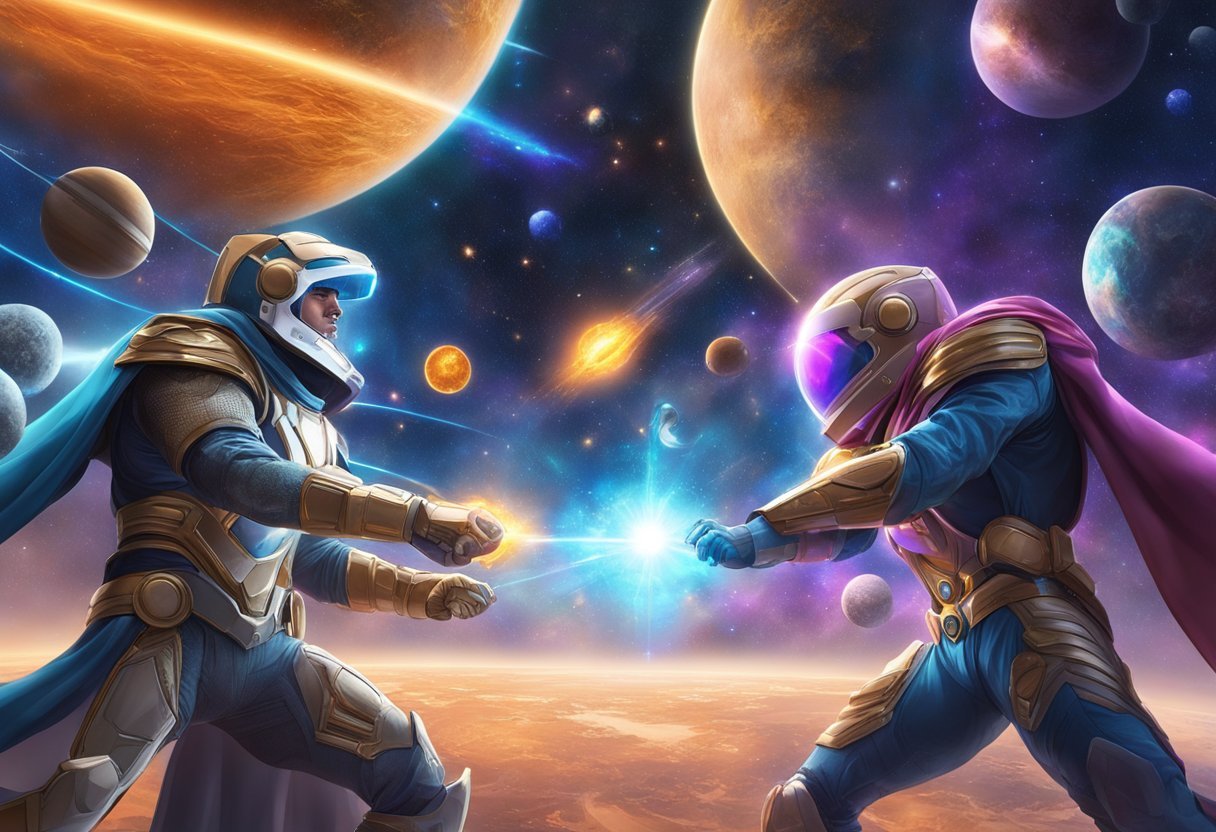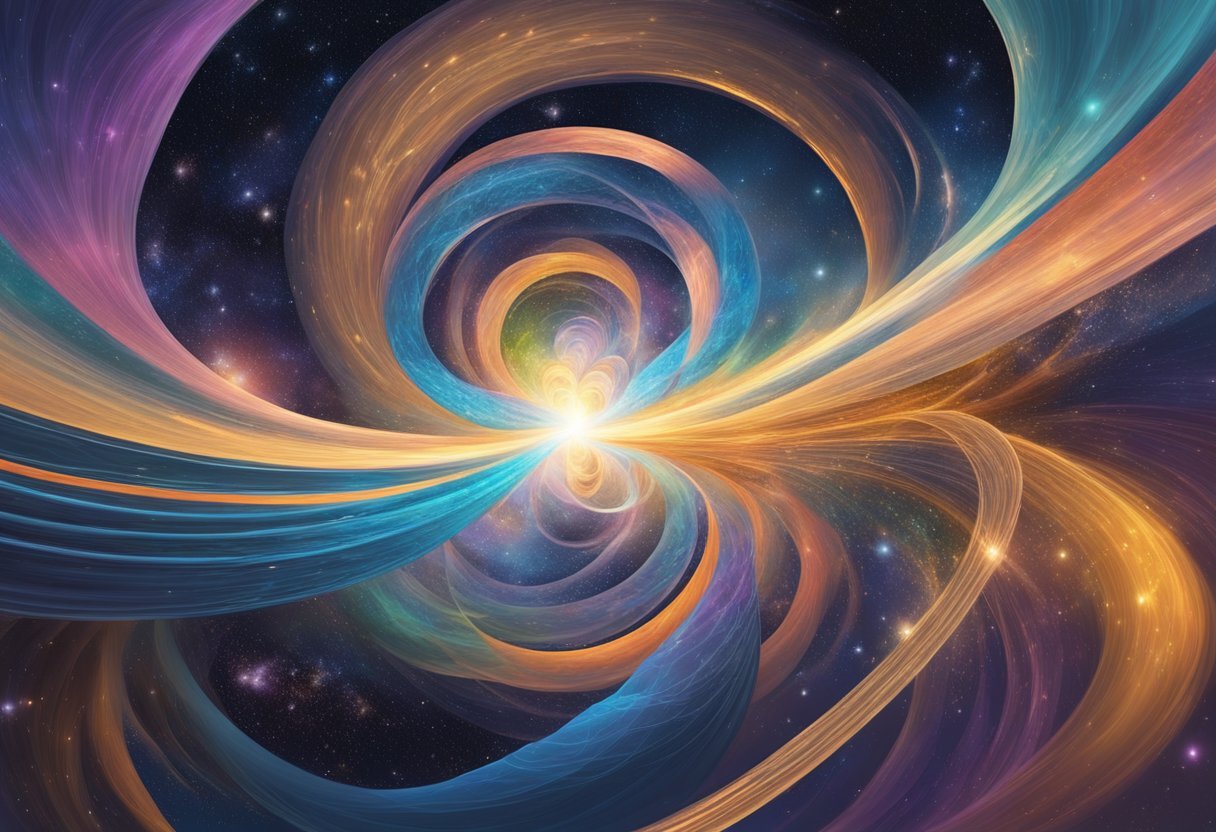The concept of the multiverse has been a topic of interest for scientists and science fiction writers alike. It is the idea that there may be multiple universes, each with its own unique set of physical laws and constants. While the concept may seem far-fetched, it is supported by several scientific theories, including string theory and inflationary cosmology.
One of the main arguments for the existence of the multiverse is the fact that the universe appears to be finely tuned for life. If any of the physical constants were slightly different, life as we know it would not be possible. The multiverse theory suggests that there are countless other universes, each with its own set of physical laws and constants, and that our universe is just one of many.
While the concept of the multiverse may seem like science fiction, it is a legitimate topic of scientific inquiry. Scientists continue to explore the possibility of multiple universes and what that might mean for our understanding of the universe and our place in it.
Conceptual Foundations of the Multiverse
The multiverse is a hypothetical concept in which there are multiple parallel universes co-existing with our own universe. Each universe in the multiverse can have different physical laws, constants, and even different histories. The concept of the multiverse is a natural extension of the idea that our universe is just one among many.
Who proposed multiverse theory?
The idea of the multiverse has been around for centuries, but it was not until the 20th century that it gained traction in the scientific community. The first person to propose the idea of a multiverse was the American philosopher William James in the late 19th century.
However, it was not until the 1950s that the concept of the multiverse was introduced in the context of physics by Hugh Everett III. He proposed the many-worlds interpretation of quantum mechanics, which suggests that every quantum measurement causes the universe to split into multiple parallel universes.
Philosophical Underpinnings
The philosophical underpinnings of the multiverse concept can be traced back to the ancient Greek philosopher Democritus, who proposed the idea of the atom.
The atom was seen as the fundamental building block of matter, and Democritus believed that there were an infinite number of atoms in an infinite number of worlds. This idea was later refined by the philosopher Leucippus, who proposed that the atoms were constantly moving and colliding, creating an infinite number of worlds.
The concept of the multiverse has also been influenced by the philosophical idea of modal realism, which was proposed by the philosopher David Lewis. Modal realism suggests that all possible worlds exist, including those that are different from our own. This idea has been applied to the multiverse concept, suggesting that all possible universes exist in the multiverse.
The concept of the multiverse has deep philosophical roots and has been refined over time by both philosophers and physicists. While it remains a controversial concept, it has the potential to fundamentally change our understanding of the universe and our place in it.
Theoretical Frameworks
Quantum Mechanics and the Multiverse
Quantum mechanics is a theoretical framework in physics that describes the behavior of matter and energy at the atomic and subatomic level. One of the most intriguing ideas in quantum mechanics is the concept of the multiverse, which suggests that there may be multiple universes that exist simultaneously.
According to this theory, every time a quantum event occurs, the universe splits into multiple parallel universes, each with its own unique properties.
The concept of the multiverse has gained popularity in recent years, as it provides a possible explanation for the many mysteries of quantum mechanics. For example, the multiverse theory can explain why particles can exist in two places at once, or why they can be in two different states simultaneously.
String Theory and the Landscape
String theory is a theoretical framework in physics that attempts to reconcile quantum mechanics and general relativity. According to string theory, the fundamental building blocks of the universe are not particles, but tiny strings that vibrate at different frequencies. These vibrations give rise to the various particles and forces that we observe in the universe.
One of the most intriguing aspects of string theory is the concept of the landscape, which suggests that there may be a vast number of possible universes that can exist. Each of these universes would have its own unique properties, such as the number of dimensions or the strength of the fundamental forces.
Inflation Theory and Cosmology
Inflation theory is a theoretical framework in cosmology that attempts to explain the origins of the universe. According to this theory, the universe underwent a period of rapid expansion in the first few moments after the Big Bang. This rapid expansion, known as inflation, would have smoothed out any irregularities in the early universe and set the stage for the formation of galaxies and other structures.
Inflation theory also provides a possible explanation for the concept of the multiverse. According to this theory, the rapid expansion of the universe would have created multiple bubbles of space-time, each with its own unique properties. These bubbles would have continued to expand and evolve, eventually giving rise to the many possible universes that exist in the multiverse.
These theoretical frameworks provide possible explanations for the concept of the multiverse. While there is still much to be learned and discovered about these theories, they offer a fascinating glimpse into the nature of the universe and the many possible realities that may exist beyond our own.
Types of Multiverses
Multiverse theory suggests the existence of multiple universes, each with its own unique set of physical laws, constants, and dimensions. According to Brian Greene, there are nine types of multiverses, but this section will focus on four of them.
Level I: Observable Universe
The observable universe is the part of the universe that can be seen from Earth. It is estimated to be around 93 billion light-years in diameter. This universe is a part of the larger universe, which may or may not be infinite. In this level, there are no parallel universes or multiple universes.
Level II: Inflationary Multiverse
The inflationary multiverse theory suggests that the universe underwent a rapid expansion in the moments after the Big Bang, creating many different “bubbles” of space-time. Each of these bubbles could be considered a separate universe with its own physical laws and constants.
Level III: Many-Worlds Interpretation
According to the many-worlds interpretation, every time a quantum event occurs, the universe splits into multiple parallel universes, each with a different outcome. This means that there are an infinite number of parallel universes, each with its own version of reality.
Level IV: Ultimate Multiverse
The ultimate multiverse theory suggests that there is an infinite number of universes, each with its own set of physical laws and constants. This level of multiverse theory is the most speculative and has the least scientific evidence to support it.
Multiverse theory suggests that there are many different universes, each with its own unique set of physical laws, constants, and dimensions. While there is evidence to support some of these theories, others remain purely speculative.
Scientific Evidence and Predictions
Cosmic Microwave Background
One of the most significant pieces of evidence supporting the multiverse theory is the cosmic microwave background radiation. This radiation is the remnant heat from the Big Bang and is present everywhere in space. According to the theory, the multiverse would have left its mark on the cosmic microwave background in the form of “bruises” or anomalies. In 2013, the European Space Agency’s Planck satellite detected these anomalies, which are consistent with the predictions of the multiverse theory.
Black Holes and Inflationary Evidence
Another piece of evidence supporting the multiverse theory is the existence of black holes and the inflationary period of the early universe. According to the theory, the inflationary period would have caused the universe to expand rapidly, leaving behind “bubbles” or pockets of space that could have formed their own universes.
These bubbles would be separated from our universe by an event horizon, which is similar to the boundary around a black hole. In 2018, a team of researchers at the University of California, Berkeley, found evidence of the inflationary period in the cosmic microwave background radiation.
Physical Constants and Their Implications
The multiverse theory also predicts that the physical constants of our universe, such as the speed of light and the strength of gravity, are not arbitrary but are instead the result of the universe’s specific conditions. If the physical constants were different, the universe would not be able to support life as we know it.
The multiverse theory suggests that there are an infinite number of universes with different physical constants, and we happen to live in the one with the right conditions for life. While there is no direct evidence for this prediction, it is a logical consequence of the theory.
The multiverse theory is supported by various lines of evidence, including the cosmic microwave background radiation, black holes, and the inflationary period of the early universe.
The theory predicts that the physical constants of our universe are not arbitrary, but rather the result of the universe’s specific conditions. While the multiverse theory is still a subject of debate and further research is needed, it remains a fascinating and compelling idea that could revolutionize our understanding of the cosmos.
Notable Scientists and Contributions
Pioneers of Multiverse Theories
The concept of the multiverse has been around for centuries, and it has been explored by many scientists and philosophers. William James, a prominent philosopher, was one of the first to suggest the idea of a multiverse in 1895. However, it was not until the 20th century that the concept gained traction in the scientific community.
Hugh Everett was one of the pioneers of multiverse theories. He developed the idea of the many-worlds interpretation of quantum mechanics in his PhD thesis. According to his work, we are living in a multiverse of countless universes, full of copies of each of us. This theory has been influential in the development of the concept of the multiverse.
Contemporary Cosmologists and Theorists
Max Tegmark is a contemporary cosmologist who has made significant contributions to the study of the multiverse. He has proposed a four-level classification system for different types of multiverses, based on the properties of the universes they contain. Tegmark’s work has been instrumental in bringing the concept of the multiverse into the mainstream of scientific thought.
Brian Greene is another notable contemporary theorist who has contributed to the study of the multiverse. He has written extensively on the subject, including his book “The Hidden Reality,” which explores the different types of multiverses and the evidence for their existence. Greene’s work has helped to popularize the concept of the multiverse among the general public.
Other contemporary scientists who have made significant contributions to the study of the multiverse include Andrei Linde, David Deutsch, Leonard Susskind, Alexander Vilenkin, Neil Turok, George Ellis, and Carlo Rovelli. These scientists have explored various aspects of the multiverse, including the evidence for its existence, the properties of the universes it contains, and the implications of its existence for our understanding of the universe as a whole.
The concept of the multiverse has been explored by many scientists and philosophers over the centuries. While the idea of a multiverse was once considered to be purely speculative, it is now a topic of serious scientific inquiry, thanks to the pioneering work of scientists like Hugh Everett and the contributions of contemporary cosmologists and theorists like Max Tegmark and Brian Greene.
Challenges in Multiverse Theories
Testability and Scientific Rigor
One of the significant challenges in multiverse theories is their testability and scientific rigor. The concept of the multiverse is still in the realm of theoretical physics and has yet to be proven through empirical evidence. As such, testing the existence of the multiverse remains a challenge for scientists.
Moreover, some critics argue that the multiverse theory lacks scientific rigor, as it relies heavily on speculative and theoretical physics. While proponents of the multiverse theory argue that it is a natural extension of the current scientific theories, critics contend that it is more of a philosophical idea than a scientific one.
Critiques and Alternative Views
Another challenge in multiverse theories is the critiques and alternative views. The concept of the multiverse has been debated by scientists and philosophers for decades, with some arguing that it is a valid scientific theory, while others remain skeptical.
Critics of the multiverse theory argue that it is an untestable and unfalsifiable idea, making it more of a philosophical concept than a scientific one. Some argue that the multiverse theory is merely a way to escape the limitations of current scientific theories.
Alternative views to the multiverse theory include the idea of a single universe or a cyclic universe. These alternative views propose different models of the universe and challenge the multiverse theory’s validity.
The concept of the multiverse theory remains a topic of debate in the scientific community. While some scientists believe in the multiverse theory’s validity, others remain skeptical due to the lack of empirical evidence and scientific rigor. Critics of the multiverse theory argue that it is more of a philosophical concept than a scientific theory, and alternative views challenge its validity.
Implications for Understanding Reality
Impact on Fundamental Constants
The multiverse theory posits that there may be an infinite number of parallel universes, each with its own set of physical laws and fundamental constants. This has profound implications for our understanding of reality, as it suggests that the values of these constants are not fixed, but rather may vary from universe to universe.
For example, the strength of gravity in our universe is determined by a constant known as the gravitational constant. If the value of this constant were even slightly different, the universe as we know it would not exist. However, in a multiverse scenario, there may be other universes where the gravitational constant takes on different values, resulting in vastly different physical realities.
Multiverse and the Nature of Existence
The multiverse theory also has implications for our understanding of the nature of existence itself. If there are an infinite number of parallel universes, each with its own version of reality, then the concept of “reality” becomes much more complex and nuanced than we previously thought.
Furthermore, the multiverse theory suggests that every possible outcome of a given situation is realized in a different universe, which means that there are infinite versions of ourselves living out different lives. This raises questions about the nature of life and the meaning of existence, as it suggests that our individual experiences are just one small piece of a much larger, interconnected whole.
The multiverse theory challenges our understanding of reality, fundamental constants, physical laws, and the nature of existence itself. While the theory is still a subject of debate and speculation within the scientific community, it offers a glimpse into the vast and complex universe(s) that we inhabit.
Frequently Asked Questions
Do multiverses exist?
The concept of multiverses is a theoretical one that has been proposed by scientists and physicists. While there is no direct evidence of multiverses, the theory is based on mathematical models and scientific observations. Therefore, the existence of multiverses cannot be confirmed or denied at this time.
Do we exist in other dimensions?
The concept of other dimensions is a complex one that is still being explored by scientists and physicists. While there is no direct evidence that we exist in other dimensions, some theories suggest that other dimensions may exist and that we may be able to access them in the future.
How many universes are in the multiverse?
The number of universes in the multiverse is unknown and may be infinite. Some theories suggest that there may be an infinite number of universes, while others propose a finite number.
Why do people believe in a multiverse?
People believe in a multiverse because the concept of multiple universes provides a possible explanation for some of the mysteries of the universe, such as the fine-tuning of physical constants and the existence of dark matter and dark energy.
What does religion say about multiverse?
Religion does not have a direct stance on the concept of multiverses. However, some religious beliefs may be compatible with the idea of multiple universes, while others may not.
What are the 3 types of universe?
The three types of universes are flat, open, and closed. A flat universe has a critical density that is equal to the density of matter in the universe. An open universe has a density that is less than the critical density, while a closed universe has a density that is greater than the critical density.
How many dimensions exist?
The number of dimensions that exist is a subject of debate among scientists and physicists. While our universe is believed to have four dimensions (three spatial dimensions and one time dimension), some theories propose the existence of additional dimensions.
What does the Bible say about the universe?
The Bible does not provide a direct explanation of the universe. However, some religious beliefs may be compatible with scientific theories of the universe, while others may not.
Does the Bible talk about other dimensions?
The Bible does not provide a direct explanation of other dimensions. However, some religious beliefs may be compatible with the idea of other dimensions, while others may not.
Why is multiverse an unacceptable theory?
The theory of multiverses is a subject of debate among scientists and physicists. Some argue that the theory is untestable and therefore unscientific, while others argue that it is a valid scientific theory based on mathematical models and scientific observations. The acceptability of the theory depends on one’s perspective and interpretation of the available evidence.




